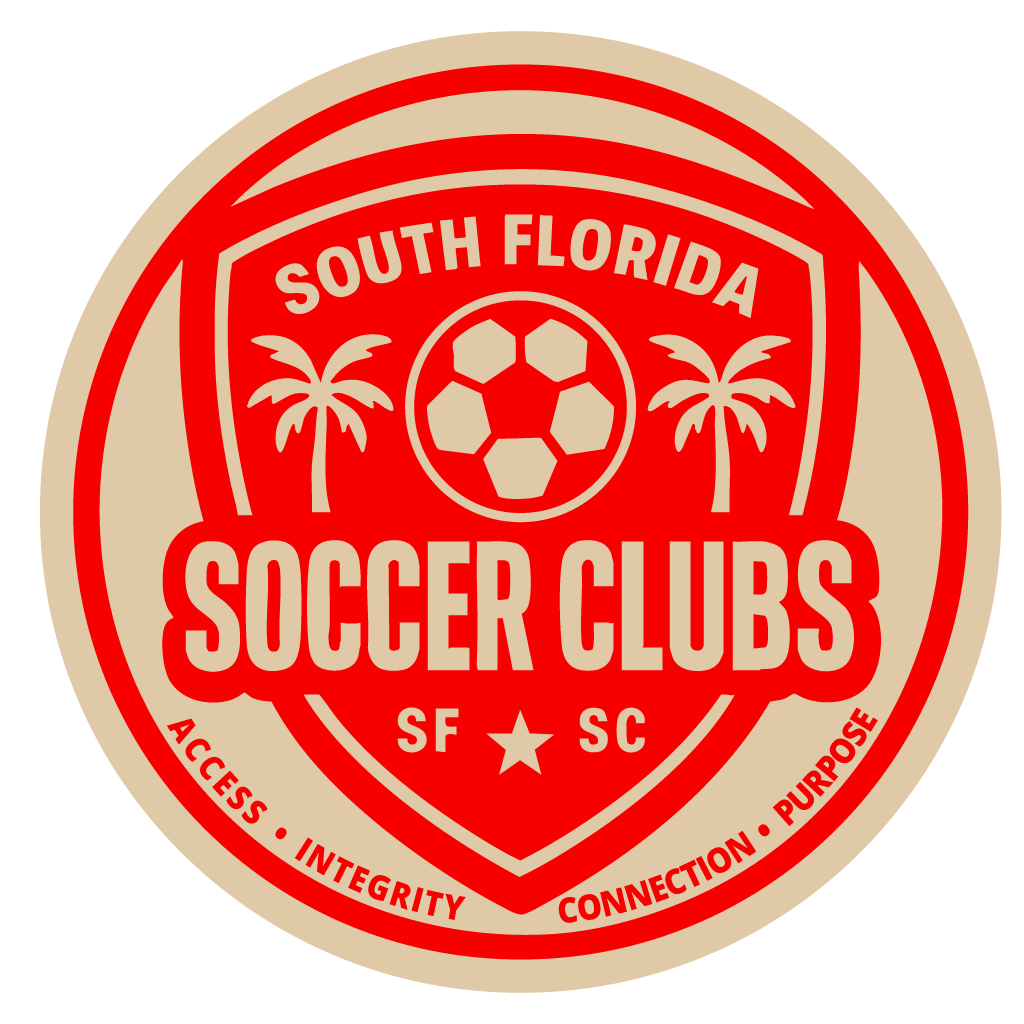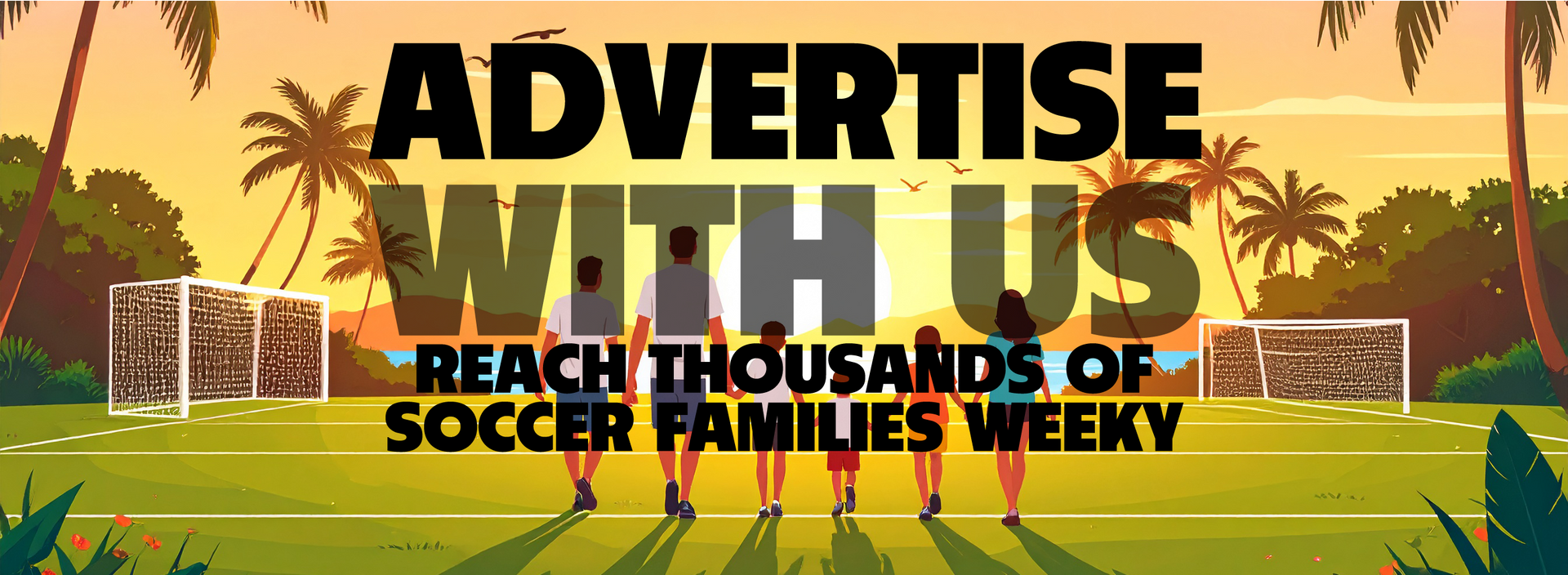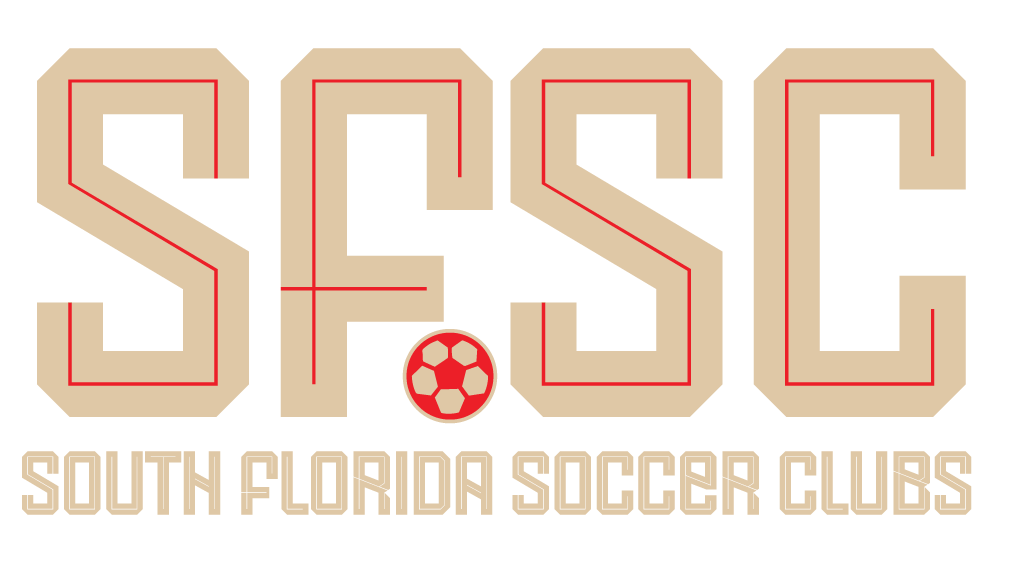Youth Soccer Development Guide
Age Groups & General Development Focus
Youth soccer coaching is structured based on the child’s age, physical development, and cognitive abilities. Here is a general breakdown of what parents can expect coaches to focus on at different age groups.
Ages 4-6 (U5-U6): Fundamentals & Fun
• Introduction to the game (basic rules, sportsmanship)
• Developing motor skills (running, jumping, coordination)
• Dribbling, passing, and shooting basics
• Small-sided games to encourage touches on the ball
• Focus on enjoyment, teamwork, and participation
Ages 7-9 (U7-U9): Skill Development & Awareness
• Emphasis on ball control, dribbling, and first touch
• Passing and receiving under pressure
• Basic positioning and spatial awareness
• Encouragement of creativity and decision-making
• Small-sided games (4v4, 7v7) to promote more touches
Ages 10-12 (U10-U12): Tactical Awareness & Technical Growth
• Refining technical skills (dribbling, passing, shooting)
• Introduction to formations, positioning, and team play
• Defending principles (1v1 defending, team shape)
• Emphasis on speed of play and quick decision-making
• Playing in a structured environment (9v9)
Ages 13-15 (U13-U15): Advanced Tactics & Game Intelligence
• Playing in an 11v11 system with defined roles
• Tactical formations, transitions, and team shape
• Advanced decision-making and movement off the ball
• Strength, conditioning, and injury prevention
• Exposure to different playing styles and match situations
Ages 16-18 (U16-U18): Elite Player Development & College/Pro Preparation
• High-intensity training focused on speed and endurance
• Individual positional tactics (defensive shape, attacking runs)
• Game analysis and decision-making under pressure
• Preparation for college recruitment or professional opportunities
• Leadership, communication, and mental resilience
League-Specific Coaching Expectations
MLS NEXT (Major League Soccer Next)
• Highest-level youth development in the U.S.
• Emphasis on professional-level tactics, positional play
• High-intensity, structured training environment
• Exposure to MLS scouts and potential professional pathways
• Focus on technical excellence and game intelligence
ECNL (Elite Clubs National League)
• High-level competition for elite players
• Strong focus on technical ability and positional discipline
• Tactical understanding and game awareness
• Emphasis on player development over results
• Pathway to college soccer and professional academies
USL Academy (United Soccer League)
• Pathway to professional USL teams
• More tactical and physically demanding than local leagues
• Player development geared toward professional competition
• Focus on team cohesion and playing philosophy
• Exposure to professional coaching environments
NPL (National Premier Leagues)
• Competitive development league for aspiring players
• Heavy focus on skill development and tactical awareness
• Exposure to regional and national competition
• Opportunities for college scouting and showcases
Regional & Local Competitive Leagues (E.g., EDP, SFUYSA, FYSA)
• Strong emphasis on technical growth & teamwork
• Coaches focus on individual skill improvement
• Tactical development varies based on team level
• More affordable and less travel compared to national leagues
Recreational Leagues (AYSO, YMCA, Local Clubs)
• Fun-first, low-pressure environment
• Basic technical skills and game fundamentals
• Minimal tactical structure, focus on enjoyment
• All players get equal playtime and experience
Choosing the Right Youth Soccer League:
What Really Matters?
When selecting a youth soccer league for your child, many parents ask: Does it really matter what league my child plays in? The answer depends on their age, skill level, and long-term goals. While league choice can impact development and exposure, the most important factors are quality coaching, consistent playing time, and opportunities to compete at the right level.
The Early Years (U6-U12): Focus on Development
For young players, the emphasis should be on technical growth, game awareness, and enjoyment. At this stage, the league itself is less important than the quality of coaching and the level of competition. Players in local travel leagues, recreational programs, or academy setups should prioritize skill-building over competition.
The Competitive Years (U13-U16): Structure Matters
As players move into their teenage years, the league structure becomes more relevant. Players looking to advance must train in challenging environments with high-level coaching. Here’s a breakdown of major leagues and their significance:
• MLS NEXT – The most elite youth development platform in the U.S., affiliated with Major League Soccer (MLS). It offers the highest level of coaching, professional club integration, and the best exposure to pro academies and top college programs. Ideal for players aiming for professional or Division I college soccer.
• ECNL (Elite Clubs National League) – One of the strongest non-MLS leagues, providing excellent competition and a proven college recruitment pathway. Players in ECNL National compete at the highest level, while ECNL Regional offers strong development for players just below the national tier. Great for players targeting college soccer, especially Division I, II, or III programs.
• USL Academy – Operated by the United Soccer League, this league serves as a bridge between youth soccer and professional pathways. USL Academy clubs have connections to USL Championship, League One, and League Two teams, making it a valuable option for players considering both college and professional routes.
• UPSL (United Premier Soccer League) – Primarily an adult semi-pro league, but with a growing youth academy system. Offers competitive play for high-level older players (U17-U19) looking to gain experience against adult competition and bridge the gap to college or professional play.
• NPL (National Premier League) – A well-structured league that offers strong regional and national competition. A solid option for players looking to develop but who may not be in the ECNL or MLS NEXT system. Many NPL players go on to play college soccer at all levels.
• Regional Leagues (USYS National League, EDP, Florida State Premier League, etc.) – These leagues provide good competition at the regional level. They are suitable for players who want to stay competitive without the heavy travel demands of ECNL or MLS NEXT.
The College Recruiting Years (U17-U18): Exposure Over League Choice
By U17 and U18, players aiming for college soccer should prioritize playing time, visibility, and development over the league itself. College scouts don’t just recruit from specific leagues; they attend showcase tournaments, ID camps, and national events where players from all leagues compete.
If your child is in MLS NEXT or ECNL National, they are already in a top-tier recruiting environment. However, players in USL Academy, UPSL, NPL, and strong regional leagues can still get recruited if they attend college ID camps, play in national showcases, and proactively reach out to coaches.
Does the League Matter? Yes, But…
The league matters in terms of level of competition, exposure, and player development opportunities, but it is not the sole factor that determines success. A player in a top league without playing time or good coaching may struggle more than a player in a lower league with great development opportunities.
The best choice depends on your child’s goals:
• Pro aspirations? → MLS NEXT,ECNL National, USL Academy, UPSL.
• Top college soccer (D1)? → MLS NEXT, ECNL National, USL Academy.
• College soccer (D2, D3, NAIA)? → ECNL, NPL, strong regional leagues.
• Competitive play but not aiming for pro/college? → NPL, EDP, Florida State Premier League, UPSL Youth.
At the end of the day, choosing the right environment is more important than chasing the highest league. Playing in the right league with the right opportunities will maximize development, exposure, and long-term success in the sport.
Set off on your next remarkable soccer adventure.



